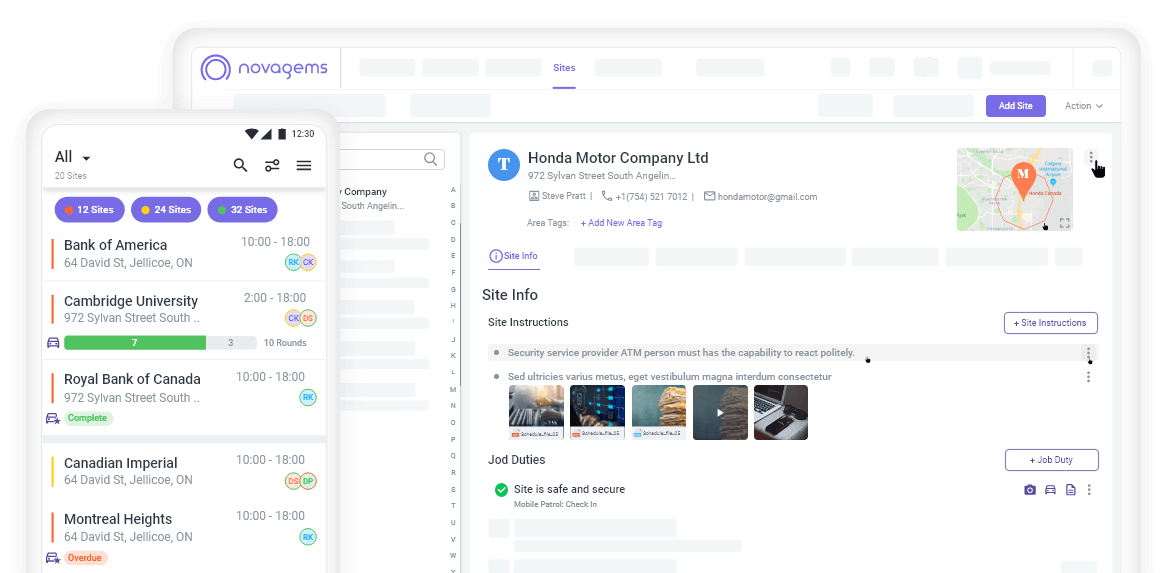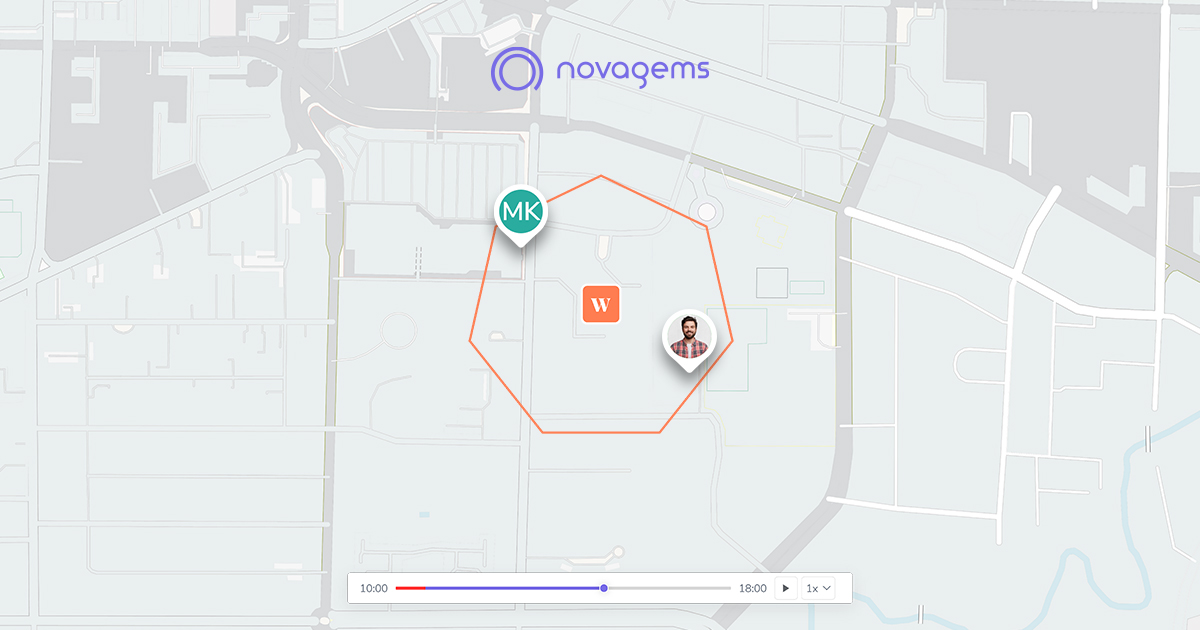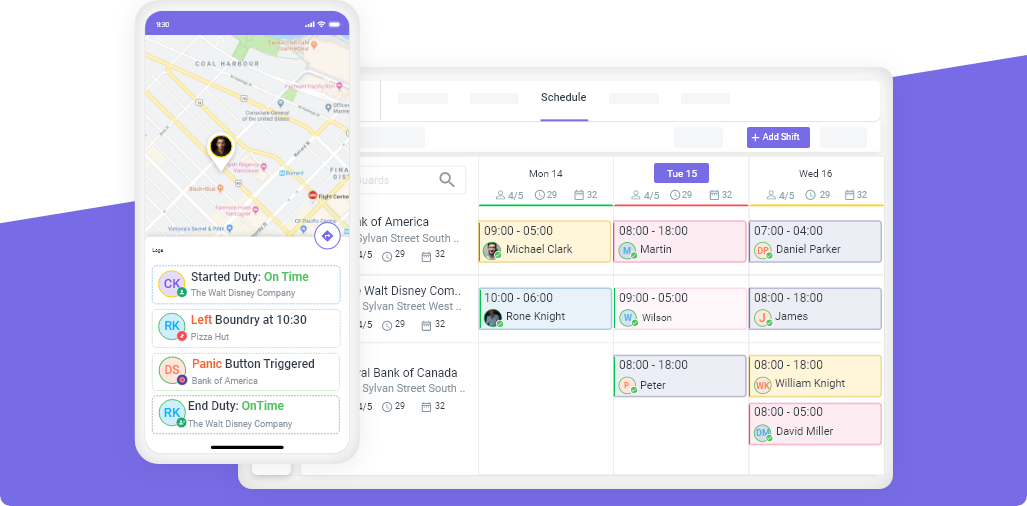How to Write an Effective Security Daily Activity Report
Published on: Wed, Sep 18, 2024
Read in 12 minutes

Key Takeaways
- A Security Daily Activity Report (DAR) is a crucial part of a guard’s responsibility and serves as an official record of the shift.
- DARs help with liability protection, incident tracking, and ensure accountability for security personnel.
- Writing a great DAR requires clarity, accuracy, and proper formatting—mistakes can weaken your report’s value.
Introduction: What is a DAR?
Security guards are responsible not only for maintaining safety and order but also for documenting their shift in a professional way. That documentation comes in the form of a Security Daily Activity Report (DAR).
A DAR is a record of events, observations, and actions taken during a shift. It can be reviewed by supervisors, clients, or legal teams and must be written clearly and factually. A well-written DAR builds trust, accountability, and legal protection.
In the U.S., private security guards outnumber police officers (about 2 million guards vs. 700,000 sworn police). Poor documentation is often cited as a reason for lost claims or liability exposure. OSHA data highlights that 13,000 assaults on security officers occur annually
Whether you’re a new guard or an experienced officer, this guide will help you write better DARs—and show you how tools like Novagems can make reporting simpler and more efficient.
What is a Security Daily Activity Report?
A Security Daily Activity Report is a written log created by a security guard during or after their shift. It covers:
- Patrols conducted
- Incidents or unusual activity
- Interactions with visitors or staff
- Equipment or property conditions
- Any other relevant site observations
This document provides a real-time snapshot of the shift and is often the only record of what happened during that period.
A Security Daily Activity Report (DAR) is a log written by security guards to document shift events, patrols, incidents, and observations in real-time or at the end of their duty.
To become a good security company in the industry, you need to attract new clients. While giving exceptional services and building trust is a sure way, there is one hidden tool many overlook. A security daily activity report is a key that will not only open many doors to opportunities. But it will also help you run your security operations more smoothly.
In the security industry, daily activity reports (DARs) are one of the most important tools for ensuring accountability and transparency. A well-written report provides a detailed account of the security officer’s actions during a shift. Allowing clients to stay informed about any incidents or important observations. Knowing how to write a clear, effective daily activity report is essential for security guards and security managers alike.
Why Daily Activity Reports Are Important
Daily Activity Reports aren’t just paperwork—they are a critical part of the job. Here’s why they matter:
1. Legal Protection
A DAR can serve as a legal document in the event of theft, trespassing, or accidents. If a case reaches court, the DAR becomes a factual reference.
In a 2022 case study by ASIS International, over 64% of property managers stated that poor or missing DARs negatively impacted their liability claims.
2. Professionalism
Well-written reports reflect well on the guard, the team, and the company. Clients notice clean, detailed, and properly formatted reports.
3. Operational Accountability
Supervisors use DARs to ensure guards are patrolling on time, logging observations, and properly handling responsibilities.
4. Real-Time Communication
DARs act as a shift handover tool, keeping the next shift informed and in sync.
Why you need daily activity reports:
- Accountability: They provide proof that assigned duties, such as patrols, were completed.
- Transparency: Clients rely on these reports to understand what happened during security shifts.
- Legal documentation: DARs can be used in court or insurance claims if an incident needs to be investigated.
Key Components of an Effective Daily Activity Report
For a daily activity report to be useful, it must include all the necessary details. Each part of the report should provide enough information to be useful but should also be clear and concise. You can even use a security guard daily report template to make it easy for you.
A well-structured Security Daily Activity Report (DAR) should cover specific details that provide a full picture of what happened during a guard’s shift. Here are the key components to include:
1. Date and Time: Always start with the exact date of the shift and the start and end times. This helps ensure the report is properly filed and easy to reference later.
2. Guard Name: Include the full name of the security guard completing the report. This is critical for accountability and tracking responsibilities.
3. Site or Location: Mention the specific site, building, or area where the shift took place. If you’re patrolling multiple zones, note that as well.
4. Weather Conditions: This is especially relevant for outdoor posts. Briefly note the weather during the shift (e.g., sunny, rainy, foggy) as it can impact visibility or safety.
5. Patrol Logs: These are detailed, time-stamped entries showing where and when patrols were performed, along with any observations. Include things like unlocked doors, lights left on, or unusual activity.
6. Incident Details: If any unusual event occurred—like a trespasser, alarm trigger, or equipment failure—document it thoroughly. Include what happened, who was involved, actions taken, and the outcome.
7. Visitor and Delivery Logs: Record any guests, vendors, or delivery personnel who entered or exited the premises. List their names, the time they arrived and left, and the reason for their visit.
8. Maintenance or Safety Issues: Note anything that needs attention from the facility or property management, such as broken lights, damaged fencing, or hazards that could pose a safety risk.
9. Shift Summary or Notes for Next Guard: Wrap up your report with a short summary of the shift, especially anything that the incoming guard should be aware of. This helps ensure smooth transitions between shifts.
10. Signature or Submission Confirmation: If submitting manually, sign the report. If using a digital system, ensure it’s submitted properly with a time-stamp or digital acknowledgment.
Well-structured reports are easier to read, archive, and retrieve later.
How to Write a Security Daily Activity Report – Step-by-Step
Step 1: Start with Basic Details
Include the date, shift time, your name, and the site you were assigned to.
Example: Date: July 17, 2025 Guard: John Smith Shift: 8:00 AM – 4:00 PM Site: Oakwood Business Park, Gate A
Step 2: Add a General Overview
Provide a brief summary of the overall shift—this sets context for the rest of the report.
Example: “Shift was uneventful with routine patrols conducted. One visitor approached the reception area at 1:15 PM for a scheduled meeting.”
Step 3: Record Patrol Logs with Timestamps
Use a time log to note when and where you patrolled, and what you observed.
Example:
- 9:00 AM – Checked Building 1 perimeter. All doors secured.
- 11:30 AM – Interior patrol of lobby and service entrance. No issues.
- 2:45 PM – Parking lot sweep. All vehicles accounted for.
Step 4: Document Incidents Using SAR Format
When something unusual happens, follow a structured format: See – Act – Result
Example: 2:10 PM – Observed unknown individual loitering near rear gate. Approached and asked for identification. Individual stated they were lost and looking for a nearby office. Provided directions and escorted them off the property. No further action needed.
Step 5: Log Visitors and Deliveries
Track who came in and out, when, and why.
Example:
- 10:15 AM – FedEx delivery. Dropped package at reception.
- 3:30 PM – Vendor (AC Maintenance) checked in. Badge issued. Departed at 4:05 PM.
Step 6: Report Equipment or Maintenance Issues
If you notice any safety hazards or damaged property, report it.
Example: Discovered broken lighting in the east stairwell during 12:00 PM patrol. Marked area with safety cone and notified building manager.
Step 7: Add Handover Notes and Signature
Wrap up the report with any notes for the next shift and sign off.
Example: “No issues requiring follow-up. Suggest monitoring side entrance due to earlier foot traffic.” — John Smith
Best Practices for Writing Clear Security Daily Activity Reports
To write a daily activity report that is clear and useful, it’s important to follow some basic best practices. Even small details, such as writing style or the use of abbreviations, can impact the clarity of your report.
- Be Detailed but Concise: While you want to include all the relevant details, it’s equally important to avoid unnecessary information. Only include what is important and relevant to the security task at hand.
- Use Simple Language: Avoid using jargon or abbreviations that may not be understood by everyone who reads the report. Keep your language simple and straightforward.
- Stay Objective: The report should focus on facts, not opinions. Don’t include personal feelings or assumptions about what happened. Stick to what you saw and what was done.
- Use Photos or Videos When Necessary: If possible, attach photos or videos that show evidence of incidents. This adds credibility to the report and helps the reader understand what occurred. This will help the authorities and your clients identify the root cause more easily. With so many security officer reports samples, you can see which works the best for your company.
Using Clear Language and Communication
It’s important that daily activity reports are written in clear and simple language. This ensures that clients can easily understand the information provided and that no miscommunications occur.
Tips for Clear Communication:
- Avoid Technical Jargon: Use simple words instead of industry-specific terms that clients might not know.
- Be Specific: Instead of saying “patrol completed,” describe the specific areas patrolled and the time.
- Keep It Objective: Don’t include personal opinions—stick to reporting facts.
This approach ensures that reports are both professional and easy to read, helping build trust with clients.
Structuring the Report for Clarity
The way you structure your daily activity report plays a big role in its readability. Clients or managers should be able to quickly scan the report and find the necessary information.
- Chronological Order: Always organize your report entries in chronological order, starting with the beginning of your shift and working through to the end. This helps to keep the report logical and easy to follow.
- Timestamps: Make sure each observation, incident, or action is time-stamped. This is crucial for tracking and verifying patrol activities.
- Separate Entries for Different Events: Use separate sections or bullet points for different observations, incidents, or tasks. This makes it easier for the reader to navigate the report.
- Summary Section: Include a summary section at the end of the report to quickly outline key points from your shift. This provides a quick overview for managers or clients who may not have time to read the entire report.
Ensuring Follow-Up and Updates
An effective daily activity report doesn’t end with just documenting what happened. Follow-up is crucial when incidents or important observations are made during the shift.
- Record Follow-Up Actions: If an issue needs to be resolved, make sure to note any follow-up actions that were taken. For example, if you reported an incident to management, make a note of it in the report.
- Provide Updates: If the incident is ongoing or requires further investigation, ensure you provide updates in future reports. This helps to keep everyone informed and ensures that nothing is overlooked.
- Ensure Client Communication: If you’ve been given instructions from the client, such as specific actions to take in the event of certain incidents, document how these instructions were followed.
Common Mistakes to Avoid
1. Using First-Person Language
Write in third person for objectivity. Wrong: I asked the person to leave. Correct: The guard instructed the person to leave the premises.
2. Skipping Time Stamps
Every activity or observation should have a corresponding time.
3. Using Vague Language
Avoid generalizations like “acted suspiciously.” Instead, describe specific actions: “The individual paced near the fence for 5 minutes, looking around.”
4. Including Opinions or Emotions
Stick to facts. Don’t speculate or guess motives.
5. Ignoring Follow-Up Actions
Always include what was done: who was notified, what response occurred, and what the result was.
The Next Step
Novagems goes beyond helping you make the perfect security daily activity report. It has features that will help you make the report faster, more professional, and more easy to read. Novagems has an all-in-one platform that takes care of scheduling, payroll, to real-time officer tracking and compliance. Other features also include -
Key Features of Novagems
Novagems is designed to make reporting simple, accurate, and professional, without the hassle of pen and paper. Here’s how it helps security teams create better Daily Activity Reports:
- Real-Time Reporting: Guards can complete and submit their DARs directly from their phone or tablet as events occur. This minimizes errors and ensures no important detail is forgotten by the end of the shift.
- Auto-Filled Fields: Standard details like time, date, and location can be automatically filled in by the system. This saves time and increases consistency across reports.
- Photo and Video Attachments: Guards can upload images or videos to support their observations or incident reports. This makes the documentation more credible and useful in case of investigations or disputes.
- Pre-Built Templates: Novagems includes pre-designed DAR templates to ensure all required sections are included, making the reporting process smoother and more standardized.
- Supervisor Access and Review: Managers can access submitted reports instantly, review them for accuracy, leave comments, and approve them from anywhere. This ensures timely oversight and reduces back-and-forth communication.
- Secure Archiving and Search: Reports are stored securely in the cloud and can be retrieved using filters like date, site, or guard name. This is especially useful when reviewing reports for audits or legal purposes.
With Novagems, security teams can focus more on staying alert and less on paperwork, while delivering professional, error-free reports that clients and supervisors can rely on.
Digital DARs are faster to complete, more accurate, and easier to review.
Conclusion
Security Daily Activity Reports are more than just paperwork—they’re proof of your performance, a shield against liability, and a communication tool for your team.
A strong DAR shows that you take your role seriously. It helps clients and supervisors trust that their site is in good hands. Whether you’re patrolling a corporate building, retail store, or construction site, good reporting is part of being a professional guard.
And with Novagems, you don’t have to do it alone. Our platform simplifies the entire process so you can focus on what really matters: staying alert and keeping people safe.
Writing an effective security daily activity report is crucial for ensuring transparency, accountability, and client satisfaction. If you are looking to make one of your own, then you will find many security guard daily activity report examples online. Just ensure your security daily activity reports are clear and detailed, and provide real value to both security managers and clients, which can also improve your service reputation and trust.
Get a Free Trial
Sign up For Newsletter
Latest Blog Posts
Get Started
Start being productive & grow your business
with Novagems





